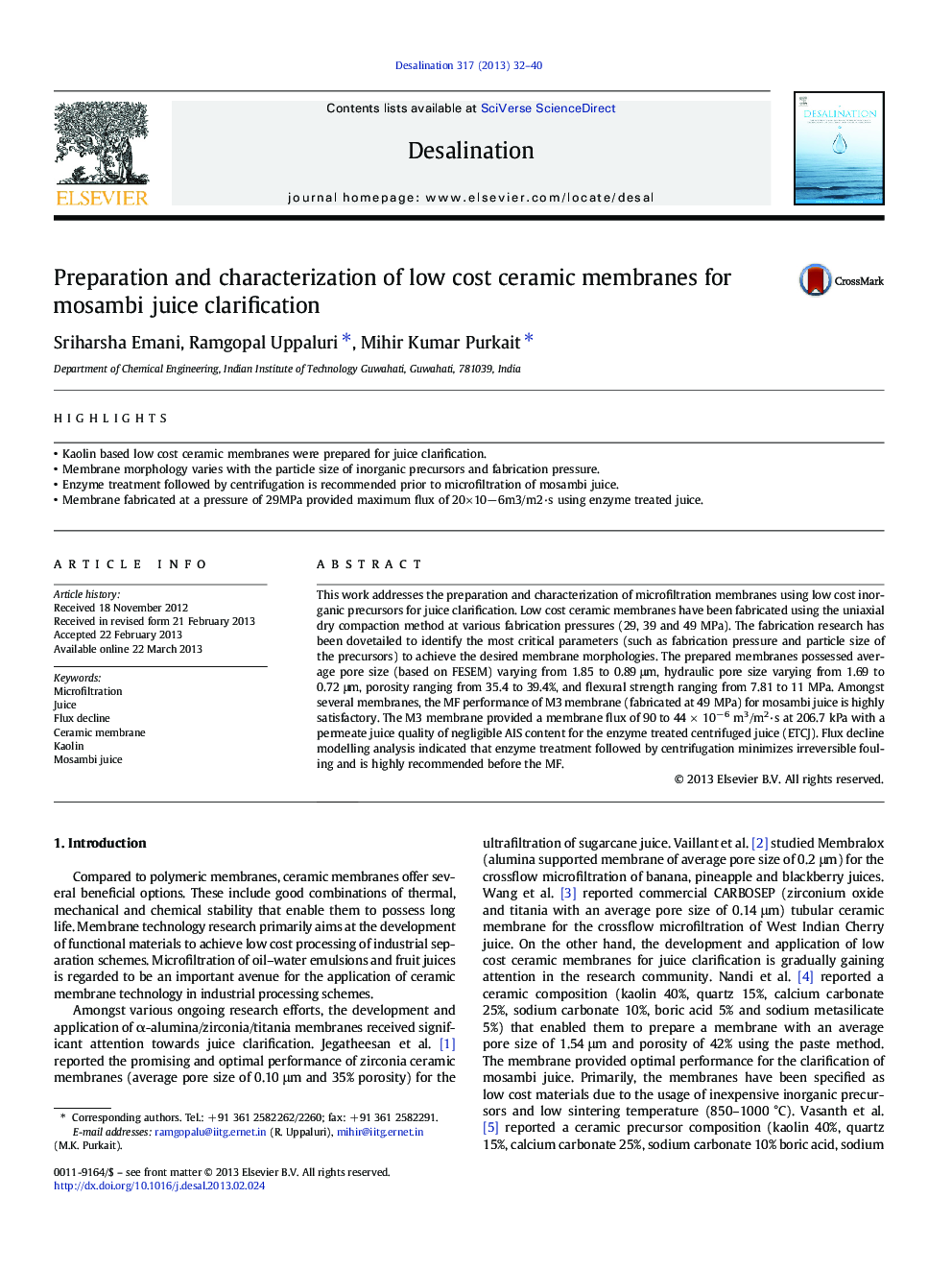| Article ID | Journal | Published Year | Pages | File Type |
|---|---|---|---|---|
| 623963 | Desalination | 2013 | 9 Pages |
•Kaolin based low cost ceramic membranes were prepared for juice clarification.•Membrane morphology varies with the particle size of inorganic precursors and fabrication pressure.•Enzyme treatment followed by centrifugation is recommended prior to microfiltration of mosambi juice.•Membrane fabricated at a pressure of 29 MPa provided maximum flux of 20 × 10− 6 m3/m2·s using enzyme treated juice.
This work addresses the preparation and characterization of microfiltration membranes using low cost inorganic precursors for juice clarification. Low cost ceramic membranes have been fabricated using the uniaxial dry compaction method at various fabrication pressures (29, 39 and 49 MPa). The fabrication research has been dovetailed to identify the most critical parameters (such as fabrication pressure and particle size of the precursors) to achieve the desired membrane morphologies. The prepared membranes possessed average pore size (based on FESEM) varying from 1.85 to 0.89 μm, hydraulic pore size varying from 1.69 to 0.72 μm, porosity ranging from 35.4 to 39.4%, and flexural strength ranging from 7.81 to 11 MPa. Amongst several membranes, the MF performance of M3 membrane (fabricated at 49 MPa) for mosambi juice is highly satisfactory. The M3 membrane provided a membrane flux of 90 to 44 × 10− 6 m3/m2·s at 206.7 kPa with a permeate juice quality of negligible AIS content for the enzyme treated centrifuged juice (ETCJ). Flux decline modelling analysis indicated that enzyme treatment followed by centrifugation minimizes irreversible fouling and is highly recommended before the MF.
